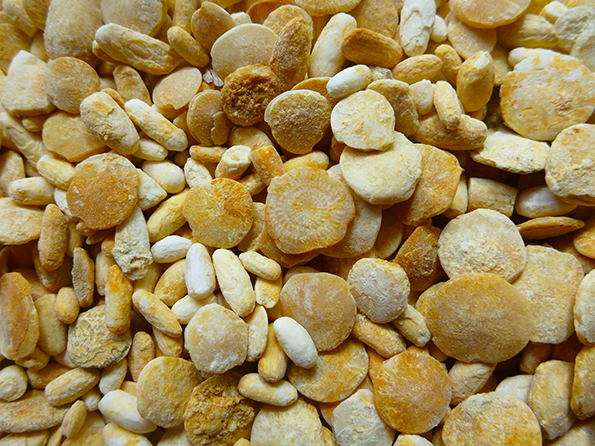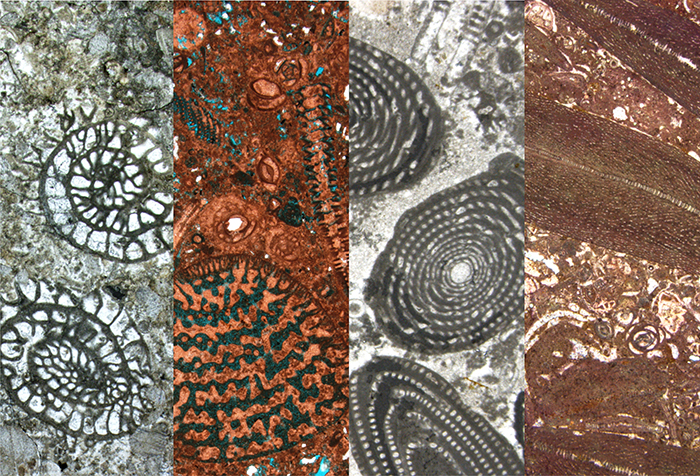Larger Benthic Foraminifera

Nummulites and Alveolina from the Eocene of Madagascar.
Contributed by Dr. Laura Cotton
Foraminifera are single celled organisms like amoebae, but unlike amoebae they have a calcareous test (or shell). These tests can be a variety of shapes and sizes, which are related to factors such as where a species of foraminifera lives.
The larger benthic foraminifera are an informal grouping of the foraminifera, consisting of members belonging to several families. They are characterized by having a complex internal structure and, as their name suggests, large size - some species can reach diameters of ~15 cm and are still single-celled organisms. Internally, their tests are divided into chambers and, often, the chambers also into chamberlets, around the initial chamber, known as the proloculus. The internal structures of the larger benthic foraminifera are not only very beautiful, but they also provide most of the characters used in larger benthic foraminiferal taxonomy.

Larger benthic foraminifera in limestone thin sections: fusulinids from Nevada; Dictyoconus from offshore India; Alveolina from Tanzania; and Somalina from Tanzania.
One of the reasons larger benthic foraminifera get so large and have these complex internal structures is because they house photosynthetic symbionts, such as single-celled plant-like organisms called diatoms, in a similar way to corals. The presence of photosymbionts means that larger benthic foraminifera also favor a similar environment to corals, up to about 100 m deep (the depth where adequate light still reaches the ocean floor) in tropical seas. It also means that they are susceptible to environmental change, making them very useful for tracking the effect of climatic changes in the shallow water in both the modern day and through geological time.
Larger benthic foraminifera have a long geological history, ranging from the Palaeozoic to the modern. However, they are best known during the Eocene (~56–33.7 million yrs ago), when they occurred in huge, rock-forming quantities. They are the dominant component of many shallow water limestone deposits, including those in Florida. The Avon Park Formation, Ocala Limestone and Marianna Limestone all contain abundant larger benthic foraminifera, so it is likely you have come across them before, perhaps without realizing!







